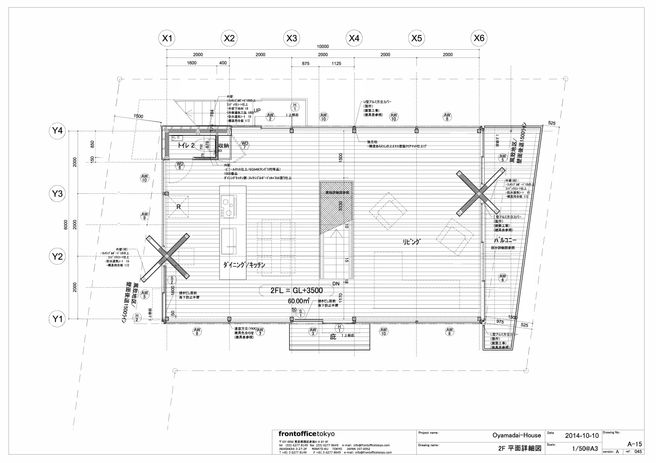oyamadai house
Architect:
Front Office Tokyo
Year:
2019
Location:
Setagaya-Ku, Tokyo, Japan

With a flag-shaped site, bound on every side by close neighbours, the understandable instinct might be to step away from the city, retreat behind walls where privacy is better assured. The family that purchased the site saw instead a chance to be as open as possible, using the small degree of isolation as an opportunity to connect to the metropolis from a slight remove. Although the neighbours are close, the tendency in Tokyo is to reject the city and build closed walls, ironically allowing the family to take the opposite stance and open their home without loss of privacy. In this way, the site is not unlike a clearing amid a forest.
The deck and landing for the stairs to the roof are oversized so the family can spread out in every direction during the day. On the ground floor, a similar openness defines the plan. The concrete floor extends outwards and becomes a landscape, softened by an abstract form that blurs boundaries - not between inside and out, but between city and home. As megacities go, Tokyo is particularly suitable for this approach. Benign and accepting of individual expression, it affords access to sun, air, and space if the starting point is one of acceptance rather than a rejection of the urban condition. A small budget required that we built with wood and as simple as possible. A wooden structure in a disaster-prone area typically works against our ambitions, requiring substantial sheer walls or braces to resist earthquakes. To answer this need, large X-shaped walls are placed at either end of the home. Acting like buttresses, the structure is set outside the plan without interfering with the desire for openness.
The first and second floors are treated as single rooms, with boxes containing the bath and toilet working as rough dividers in the open plan. The second floor’s height was set so the family could see out to the river valley from their living room, looking over their neighbours' roofs in the hilly site. Taking advantage of the 3-meter-high ceilings on the first floor, a large long-term storage is hung from the ceiling, freeing up floor space for daily life. The storage defines the master bedroom and is incidentally used to hang a set of large doors that can close off the bath and the bedroom as needed.

The Oyamadai House by Front Office Tokyo is an example of New Wood Open Architecture showing how an urban dwelling can open itself to the surrounding context instead of secluding within its property boundaries. This “open” concept extends throughout the design and organization of the house itself. The narrow site allows each floor to be completely open without interior load bearing posts or shear walls. The structural planning introduces high-level flexibility as interior partitions can be added or removed based on use and not supporting requirements. This scheme creates a resilient dwelling that can adapt to meet the changing housing needs of its inhabitants. Cross bracing within the wood frame cavities creates structural rigidity and shear strength without compromising the open floor plan, simultaneously maximizing spatial volume.
analysis




























































